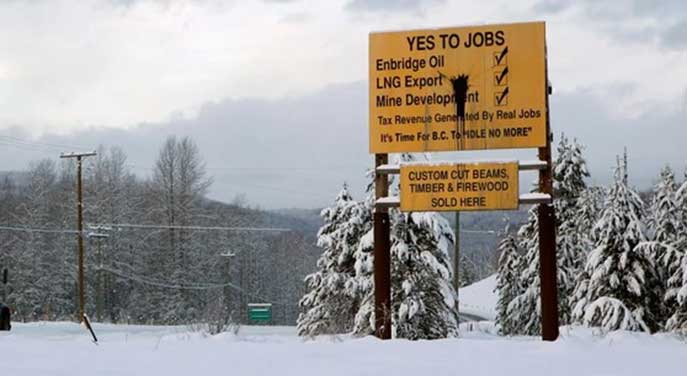 Most Indigenous peoples and nations are not opposed to resource development. In fact, almost every Indigenous community is involved at some level in forestry, commercial fishing, agriculture, oil and gas or mining already.
Most Indigenous peoples and nations are not opposed to resource development. In fact, almost every Indigenous community is involved at some level in forestry, commercial fishing, agriculture, oil and gas or mining already.
What we are opposed to is being left out. For over a century, resources were extracted from our territories without our say and without our benefit. That was never acceptable; now, it’s no longer legal. But we are not looking to grind resource development in Canada to a halt. We are looking for opportunities to get involved: as workers, contractors, partners and owners.
One huge opportunity is to create an Indigenous Loan Guarantee program to address what is identified again and again as a main barrier to our economic development: limited access to capital. Because of Indian Act provisions and other historic challenges, most Indigenous communities lack the ability to get financing so they can get involved in business. You need money to make money.
The federal government has the unique ability to provide guaranteed loans at very low rates that cost the taxpayer nothing – we will pay interest! – but provide our communities with a chance to be involved in resource development and become prosperous.
There are already models we can look to. The Alberta Indigenous Opportunities Corporation has helped spur a number of major projects with Indigenous ownership, including pipelines, power plants and cogeneration facilities. The Ontario Aboriginal Loan Guarantee Program supports Indigenous participation in electricity infrastructure projects. And the new Saskatchewan Indigenous Investment Finance Corporation will provide loan guarantees to support Indigenous-equity ownership of major projects in mining, energy, oil and gas, forestry and value-added agriculture.
South of the border, the United States federal government just announced $20 billion in loan guarantees for tribal energy development in its Inflation Reduction Act.
Now the Canadian federal government needs to get on board. This is a low-cost, high-impact strategy that not onladvancesce economic reconciliation but helps get resource projects derisked, approved, and commercially viable.
The First Nations Major Projects Coalition, a network that includes over 85 nations in seven provinces and territories and provides support to projects that involve an equity position for the First Nation partner, has even outlined what a Canadian Indigenous Loan Guarantee Program could look like. There are no more excuses.
Here’s an example of how it could help.
The nations along the Coastal Gas Link route were offered the opportunity to buy equity in the pipeline, thus enhancing their influence, involvement and knowledge of the project, but most importantly, getting a share of the stable revenues it will eventually return. This is key for all our nations if we want to reduce our dependence and become self-determining.
The problem was that while the project is expected to provide utility-scale returns in the range of nine percent, the communities could only get credit at an interest rate of 12 to 15 percent. This is extortive. (They still succeeded in getting a 10 percent option in the pipeline set aside and are seeking alternative financing arrangements.)
This is where government needs to come in: to be the bridge that supports Indigenous communities, the resource sector and the economy all in one fell swoop, with the one thing they have ready at their disposal: cheap money. And they shouldn’t attach strings on what kinds of projects they will fund, for example by excluding oil and gas or nuclear or mining: let Indigenous communities decide for themselves what opportunities fit with their values.
The Indigenous Resource Network has launched a campaign to bring awareness to this gap called Ownership Changes Everything. We are looking for solutions for our people, and this one is staring us in the face. We hope other Canadians, both Indigenous and non, can lend their voices to our efforts.
Bob Merasty is the Executive Director of the Indigenous Resource Network and former Chief of Flying Dust First Nation in Treaty 6.
For interview requests, click here.
The opinions expressed by our columnists and contributors are theirs alone and do not inherently or expressly reflect the views of our publication.
© Troy Media
Troy Media is an editorial content provider to media outlets and its own hosted community news outlets across Canada.


